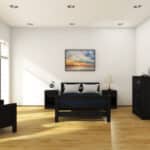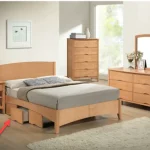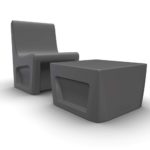How to Use Furniture to Aid Consumer Independence

Incontinence can severely limit patient or consumer independence. Limited mobility can also be a big obstacle since aiding consumers in their movements from one area to another is demanding on staff time and resources. So what can you do to help build confidence and independence in your patients or consumers? Believe it or not, your furniture can be the best place to start!
Innovative Solutions for Fluid Issues
Pop-Out Seats are by far the most innovative solution for fluid issues. With this design, the entire seat of an upholstered sofa, loveseat or chair “pops” out leaving just an open frame to allow easy mopping and cleaning of fluids. Urine, or any fluid, flows through to the floor and eliminates pooling on upholstery or into wood frames. While “accidents” may still happen, staff can worry less about the health risk of urine and fluids pooling on consumers.
Promoting Mobility with Seating Modifications
When consumers have mobility limitations, seating design can have a big impact and can encourage more independence and movement. Here are a few modifications that can make seating an asset to your limited mobility consumers:
- Arms. Arms on chairs are a necessity for those with limited mobility as they provide extra support for transitioning from sitting to standing and vice versa.
- Seat Height. Seniors and others with limited mobility often suffer from reduced muscle tone. In these cases, seat height must be higher to enable the extension of the knee from the sitting to standing position. Seat Height should range from 20” to 22”.
- Seat Depth. A shorter seat depth also aids in the transition from sitting to standing. Seat depth should range from 20” to 22”.
- Cushion Firmness. All seating pieces intended for use by individuals with limited mobility should have a cushion since the person tends to stay seated for extended periods of time. A cushion should not be so soft that it creates an obstacle for standing but should not be so hard that it is uncomfortable for extended use.
Whatever the needs of your consumers, aiding independence is a critical goal. Practical, durable furniture solutions will allow consumers increased confidence as they are able to do more to help themselves.
Make sure to work with a reputable contract provider who truly understands the needs of not only your consumers but also your staff.
Topics: Health Care Furniture, Commercial Lounge Furniture, Furniture For Incontinence, Behavioral Healthcare Furniture, Contract Furniture & Fabric: Making it Last, group living furniture, heavy use furniture, contract fabrics, retail vs contract Furniture, Furniture for Seniors

















